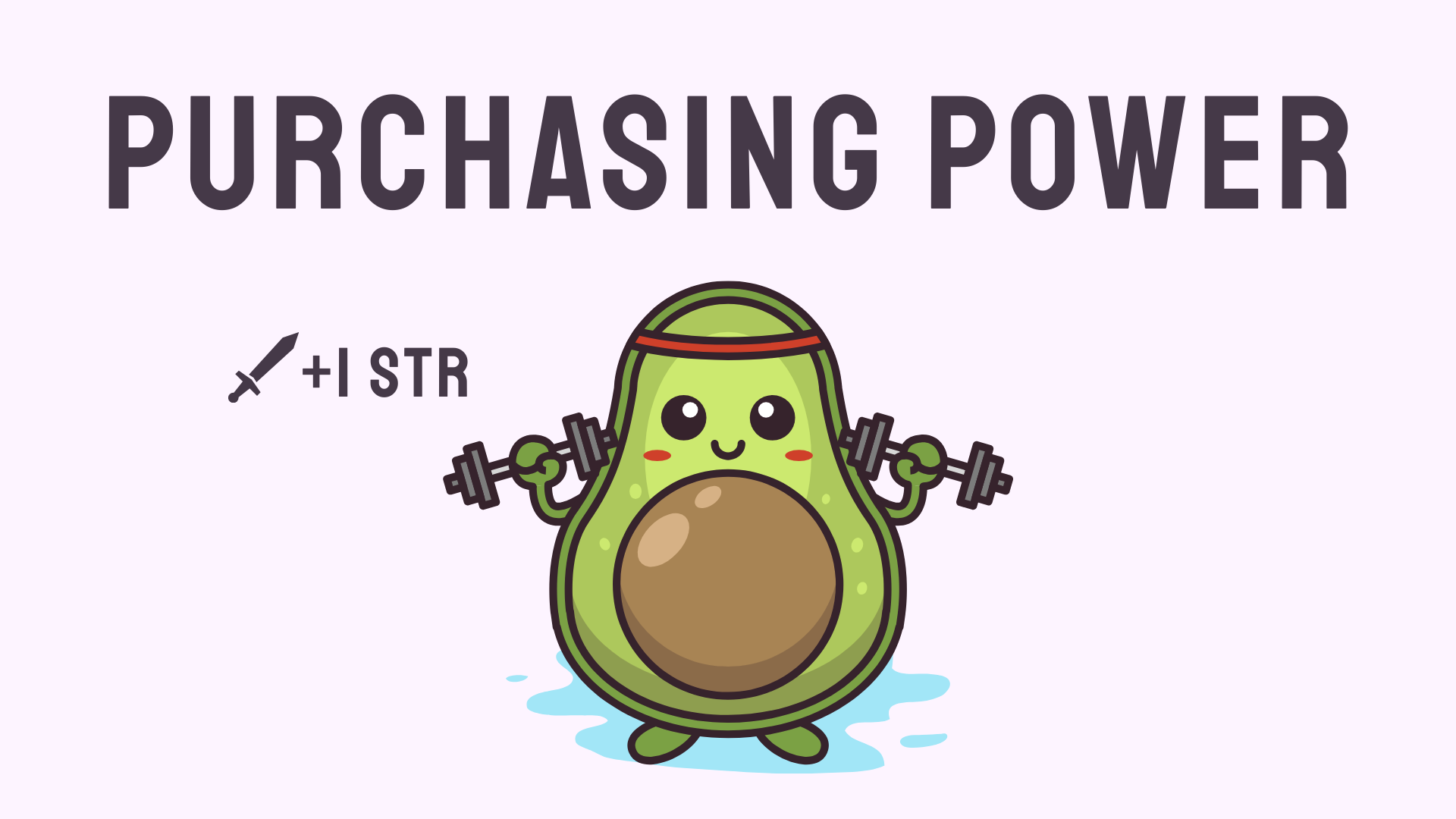What is purchasing power?
Purchasing power is easy to understand and goes a long way toward knowing what your money is worth!

Purchasing power is the amount of goods and services that a singular unit of currency can buy at a given point in time. Remember when your parents would complain about being able to buy a chocolate bar for only a dollar when they were kids? That’s an example of purchasing power, where the value of one dollar was worth more back then than it is now.
Nowadays, you need to take out a loan for a chocolate bar. If you took a trip back to 1947, you might be amazed to find chocolate bars in Canada only cost 5 cents. That same year, Canada increased the price of chocolate bars to 8 cents. Nobody batted an eye... except for the 200 kids who stormed the legislature building of British Columbia in protest. Those kids had their priorities straight. Nowadays, standard-sized chocolate bars can cost as much as two dollars or more.
So why does the purchasing power of a dollar increase or decrease? The answer is inflation. According to the Bank of Canada, “inflation erodes the purchasing power of money.” The Consumer Price Index (CPI), which is used to represent changes in prices as experienced by Canadian consumers, shows that the inflation rate is currently around 1.6% as of September compared to 2% in August.
How inflation impacts purchasing power
Inflation erodes the purchasing power of a currency over time. If life were a video game, inflation would be a debuff that gradually reduces your character’s strength. If video games aren’t your forte, think of inflation as a leaky watering can. At first, you can water your entire garden with your watering can.
Inflation is like a slow leak in the can that allows a small amount of water to leak out with every step you take. By the time you reach your garden, there is less water in the can. Over time, the leak gets bigger and your watering can empties faster. Before you know it, you can only water a fraction of your garden before you run out of water.
In the same way, inflation causes prices to rise over time, which decreases how much of something you can buy. Earlier we used an example of a chocolate bar. Let’s look at something a bit more relatable. Avocados. The year is 2022. Let’s say you have a grocery budget of $50.00 and avocados cost $5.00.
You could buy 10 avocados. The next year, the inflation rate caused avocado prices to skyrocket to $7.00. With the same budget of $50.00, you can now only buy about seven avocados. Bummer. Compared to 2022, the purchasing power of $50 has declined by about 33%, impacting your ability to buy avocados.
Unfortunately, there is no magic potion that can cure inflation. Instead, the Bank of Canada is constantly adjusting interest rates to keep the inflation rate within its targeted range of 2%. At this rate of inflation, prices are more stable and it helps the economy function better. However, problems arise when the inflation rate gets too high, including higher cost of living and higher interest rates.
Both impact quality of living, especially when consumers aren’t paid wages that can keep up with inflation.
The national inflation rate is calculated using CPI data gathered from all provinces and territories. However, inflation rates can vary from one region to the next due to regional price differences, consumer choices, import prices, and other factors. In Alberta, our purchasing power is lower than elsewhere in the country in some cases because our province has the second-highest inflation rate in Canada. No wonder I can’t afford rent.
Our purchasing power might be down in the dumps, but we still have the power to improve our financial knowledge. This knowledge helps us navigate whatever obstacles life throws at us, be it absurdly high rent or the woes of managing 101 online subscriptions. If you are new to finance, why not start by learning about the key economic principles that make the world of economics spin?
